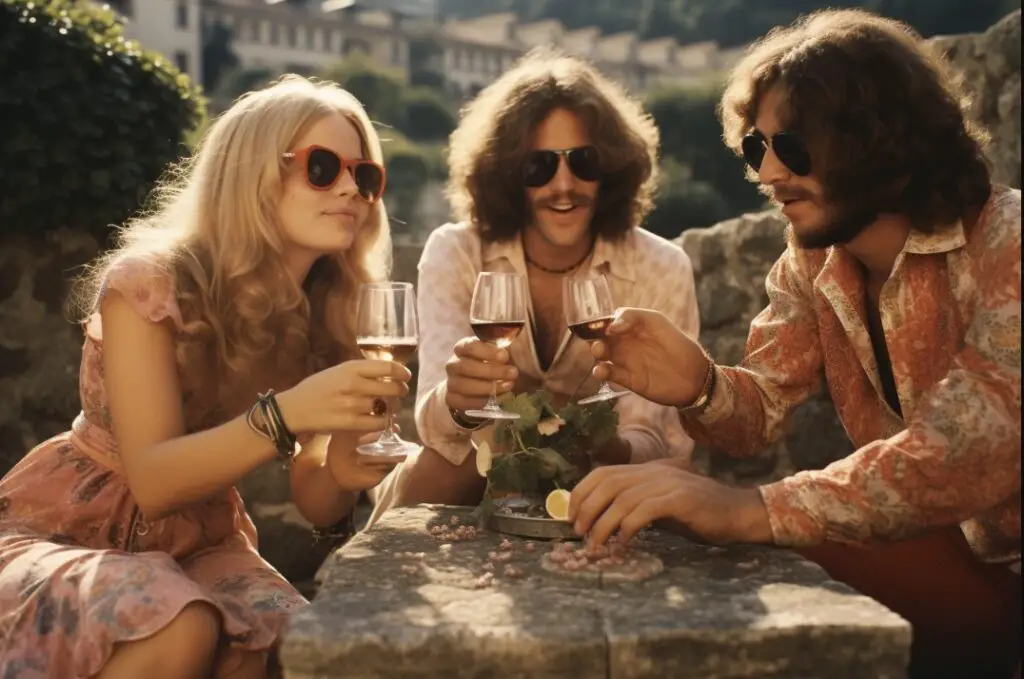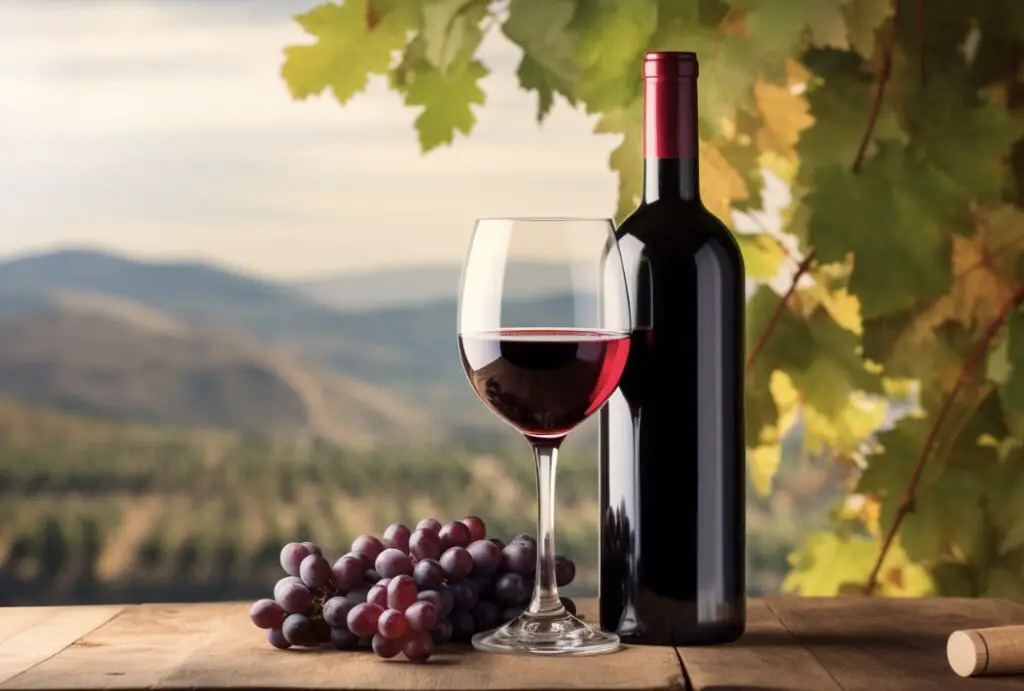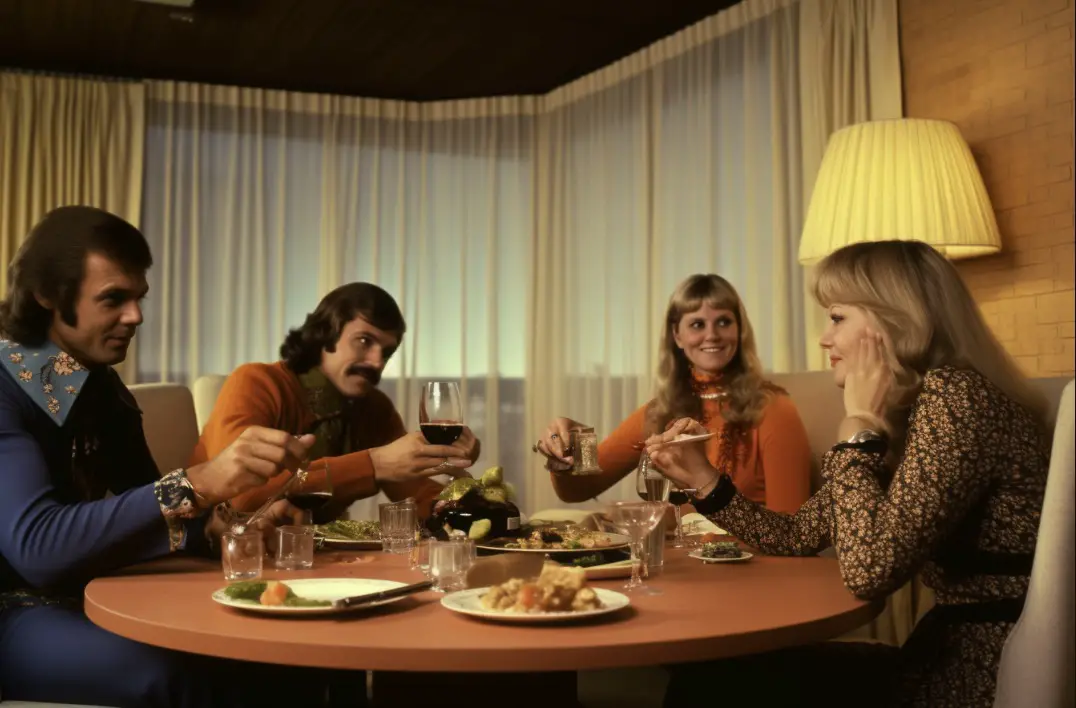In the 1970s, the cheap wine that was popular was none other than Mateus Rosé.
This Portuguese wine exploded onto the scene and became a staple in households across the United States and Europe.
As an experienced wine taster and home brewer, I have a deep appreciation for the history of wine and the trends that have shaped the industry.
This blog post will take a closer look at the 1970s wine scene and explore the reasons behind the popularity of Mateus Rosé and other cheap wines during that period.
Mateus Rosé: The Star of the 1970s
The History of Mateus Rosé
Mateus Rosé was first produced in 1942 by Fernando Van Zeller Guedes in Portugal. The wine, which is a blend of red and white grape varieties, was initially intended to be an affordable alternative to French champagne.

By the 1970s, Mateus Rosé had become the go-to cheap wine for many consumers. Its distinct taste, low price, and eye-catching bottle design contributed to its widespread popularity.
The Taste of Mateus Rosé
Mateus Rosé has a unique, off-dry taste with hints of strawberry and raspberry. It is slightly fizzy, which makes it a refreshing option for warm summer days.

The wine’s sweetness and low alcohol content (around 11%) made it an attractive choice for those who were new to wine or preferred a less potent beverage.
The Iconic Bottle Design
The bottle design of Mateus Rosé is one of the factors that contributed to its popularity. The flask-shaped bottle, inspired by the traditional Portuguese water carriers, is both functional and aesthetically appealing.
The bottle’s unique design and the wine’s vibrant pink color made it stand out on store shelves and in bars.
Other Popular Cheap Wines of the 1970s
Blue Nun
Blue Nun was a popular German wine in the 1970s that was known for its iconic blue bottle. This Liebfraumilch wine, a semi-sweet white wine, was an affordable and easy-to-drink option for many consumers.

Riunite Lambrusco
This Italian red wine gained popularity in the 1970s due to its low price and sweet taste. Riunite Lambrusco was often served chilled, making it a refreshing choice for warm weather gatherings.
Other wines that where popular in the 1970s
In the 1970s, several other wines apart from Mateus Rose also gained popularity and became iconic in the wine industry. Here are a few examples:
1. Chardonnay: Chardonnay experienced a surge in popularity during this decade, especially from California. The introduction of oak aging and malolactic fermentation techniques resulted in rich, buttery Chardonnays that appealed to many wine drinkers.

2. Cabernet Sauvignon: Cabernet Sauvignon, particularly from California’s Napa Valley, saw a significant rise in popularity during the 1970s. This period marked the beginning of Napa’s reputation as a world-class wine region, with wineries like Robert Mondavi leading the way.
3. Merlot: Merlot started gaining recognition during the 1970s, primarily as a blending grape in Bordeaux-style wines. However, it wasn’t until the 1980s and 1990s that Merlot truly soared in popularity, thanks to its approachable and fruit-forward style.
4. White Zinfandel: While not a high-quality wine, White Zinfandel experienced a massive surge in popularity during the 1970s. This sweet, blush wine became a favorite among many casual wine drinkers, especially in the United States.
5. German Riesling: German Rieslings, particularly those from the Mosel region, continued to be popular during the 1970s. These wines were known for their vibrant acidity, floral aromas, and varying levels of sweetness, appealing to both wine enthusiasts and casual drinkers.
It’s important to note that wine preferences can vary depending on the region and individual tastes. The wines mentioned above were notable for their popularity during the 1970s, but there were certainly other wines enjoyed during that time as well.
The Role of Marketing in the Popularity of Cheap Wine
Catchy Slogans and Memorable Jingles
The marketing strategies employed by wine producers in the 1970s played a significant role in the popularity of cheap wines like Mateus Rosé. Catchy slogans and memorable jingles were key components of these marketing efforts. For example, Riunite’s slogan, “Riunite on ice, that’s nice,” helped to establish the brand as a fun, approachable option for consumers.

Targeting New Wine Drinkers
The marketing campaigns of the 1970s were designed to appeal to a new generation of wine drinkers. Rather than targeting experienced wine connoisseurs, these campaigns focused on younger consumers and those who were new to wine. This approach helped to make wine more accessible and appealing to a broader audience.
The Impact of Cheap Wines on the 1970s Wine Industry
The popularity of cheap wine in the 1970s had both positive and negative impacts on the wine industry. On the one hand, the increased demand for wine led to greater production and innovation within the industry. On the other hand, the focus on cheap, mass-produced wines led to a decline in the perceived quality of wine as a whole.
The Legacy of 1970s Cheap Wine
While the popularity of cheap wines like Mateus Rosé and Blue Nun has waned in recent years, their impact on the wine industry is still felt today. These wines helped to introduce a new generation of consumers to the world of wine and paved the way for the many affordable, high-quality options that are now available on the market.
Conclusion
In conclusion, the 1970s were a pivotal time for the wine industry, with Mateus Rosé and other cheap wines dominating the market. The following are 10 key facts about this era of wine:
1. Mateus Rosé was the most popular cheap wine of the 1970s.
2. The wine was first produced in 1942 in Portugal.
3. Mateus Rosé has a distinct, off-dry taste with hints of strawberry and raspberry.
4. The iconic flask-shaped bottle design contributed to the wine’s popularity.
5. Other popular cheap wines of the 1970s included Blue Nun and Riunite Lambrusco.
6. Marketing strategies, such as catchy slogans and targeting new wine drinkers, played a significant role in the popularity of these wines.
7. The popularity of cheap wine led to increased production and innovation within the wine industry.
8. The focus on mass-produced wines also led to a decline in the perceived quality of wine.
9. The legacy of 1970s cheap wine can still be seen in the availability of affordable, high-quality options today.
10. Mateus Rosé and other cheap wines of the 1970s helped to introduce a new generation of consumers to the world of wine.
FAQs
What was the most popular wine in 1970?
In 1970, the most popular wine was likely Chardonnay. Chardonnay gained significant popularity during the 1970s, particularly in the United States.
This was due to several factors, including the rise of California winemaking and the introduction of new winemaking techniques that showcased the varietal’s versatility.
Chardonnay’s rich and buttery flavor profile, along with its ability to be aged in oak barrels, appealed to a wide range of wine drinkers, contributing to its widespread popularity during that time.
Did people drink a lot of wine in the 70s?
Yes, people did drink wine in the 70s. Wine consumption in the 1970s experienced a significant increase compared to previous decades, as it became more popular and accessible to a wider range of consumers.
This period saw a shift towards a more diverse and international wine market, with a growing interest in both domestic and imported wines. The 70s also marked the beginning of the “wine boom” in the United States, with the emergence of boutique wineries and the rise of California wines, particularly those from Napa Valley.
Additionally, the 1976 “Judgment of Paris” wine tasting event, where California wines outperformed French wines, helped elevate the reputation and popularity of wine during this era.
Is 1970 wine still good?
As an expert brewer, I mainly specialize in beer production rather than wine. However, I can provide some general information regarding the aging potential of wine.
Whether a 1970 wine is still good depends on several factors, including the type of wine, storage conditions, and personal preferences.
Firstly, it is important to note that not all wines are intended for long-term aging. Most wines produced are meant to be consumed within a few years of their vintage date. However, certain wines, particularly high-quality red wines (such as Bordeaux, Barolo, or Rioja), have the potential to age and develop complex flavors over several decades.
Secondly, proper storage conditions are crucial for the longevity of wine. Wines should ideally be stored in a cool, dark, and humid environment, away from temperature fluctuations and direct sunlight. If the wine has been stored under favorable conditions, there is a higher chance that it may still be in good condition.
Lastly, personal preferences play a significant role in determining whether a wine is considered good. Some individuals enjoy the flavors and characteristics that develop over time in aged wines, such as tertiary aromas, softer tannins, and increased complexity. Others may prefer the vibrant and fruity characteristics of younger wines.
Considering these factors, it is difficult to provide a definitive answer without specific details about the wine in question. If you possess a 1970 wine, it would be best to consult with a wine expert or sommelier who can assess its potential quality based on the type of wine, producer, storage conditions, and other relevant factors.
What wines were popular in the 1990s?
In the 1990s, several wine varietals gained popularity among consumers. Some of the most popular wines during this decade included:
1. Merlot: Merlot experienced a surge in popularity in the 1990s, thanks in part to its smooth and approachable character. It became a go-to choice for many wine drinkers, especially those who were transitioning from white to red wines.
2. Chardonnay: Chardonnay continued to be a favorite white wine during the 1990s. However, there was a shift in consumer preferences towards a more fruit-forward and less oaky style, compared to the heavily oaked and buttery Chardonnays of the 1980s.
3. Cabernet Sauvignon: Cabernet Sauvignon remained a popular choice for red wine enthusiasts in the 1990s. Known for its bold and full-bodied character, Cabernet Sauvignon gained further recognition during this decade, particularly from regions like Napa Valley in California.
4. Zinfandel: Zinfandel, especially the red version, gained significant popularity in the 1990s. Its jammy fruit flavors and higher alcohol content appealed to many wine drinkers seeking a bolder and more intense experience.
5. Pinot Noir: Towards the end of the 1990s, Pinot Noir started to gain traction among wine enthusiasts. This varietal, known for its delicate and nuanced flavors, experienced a surge in popularity that continued into the 2000s.
It is worth noting that wine preferences can vary depending on the region and individual taste, but these varietals generally stood out as popular choices during the 1990s.
What wine was popular in the 1980s?
In the 1980s, several types of wine gained popularity among consumers. Some of the most popular wines during this era included:
1. Chardonnay: Chardonnay experienced a surge in popularity during the 1980s, particularly from California. This full-bodied white wine, often aged in oak barrels, became known for its rich and buttery flavors.
2. Cabernet Sauvignon: Cabernet Sauvignon, both from California and Bordeaux, France, was highly sought after in the 1980s. This red wine variety is known for its bold and robust character, with flavors of blackcurrant, dark cherry, and sometimes hints of cedar or tobacco.
3. Merlot: Merlot gained significant popularity in the 1980s, especially as a more approachable alternative to Cabernet Sauvignon. This red wine is known for its smooth and velvety texture, often showcasing flavors of ripe plums, blackberries, and chocolate.
4. White Zinfandel: While Zinfandel as a red wine has a long history, it was the rise of White Zinfandel in the 1980s that captured the attention of many wine drinkers. This blush wine, made from the same grape variety, gained popularity for its slightly sweet and fruity profile.
5. Beaujolais Nouveau: Beaujolais Nouveau, a red wine made from the Gamay grape and released annually on the third Thursday of November, experienced a surge in popularity during the 1980s. This light-bodied and fruity wine became known for its vibrant flavors and festive release date.
It’s important to note that wine preferences can vary among individuals and regions, so while these wines were generally popular in the 1980s, personal preferences may have differed.




